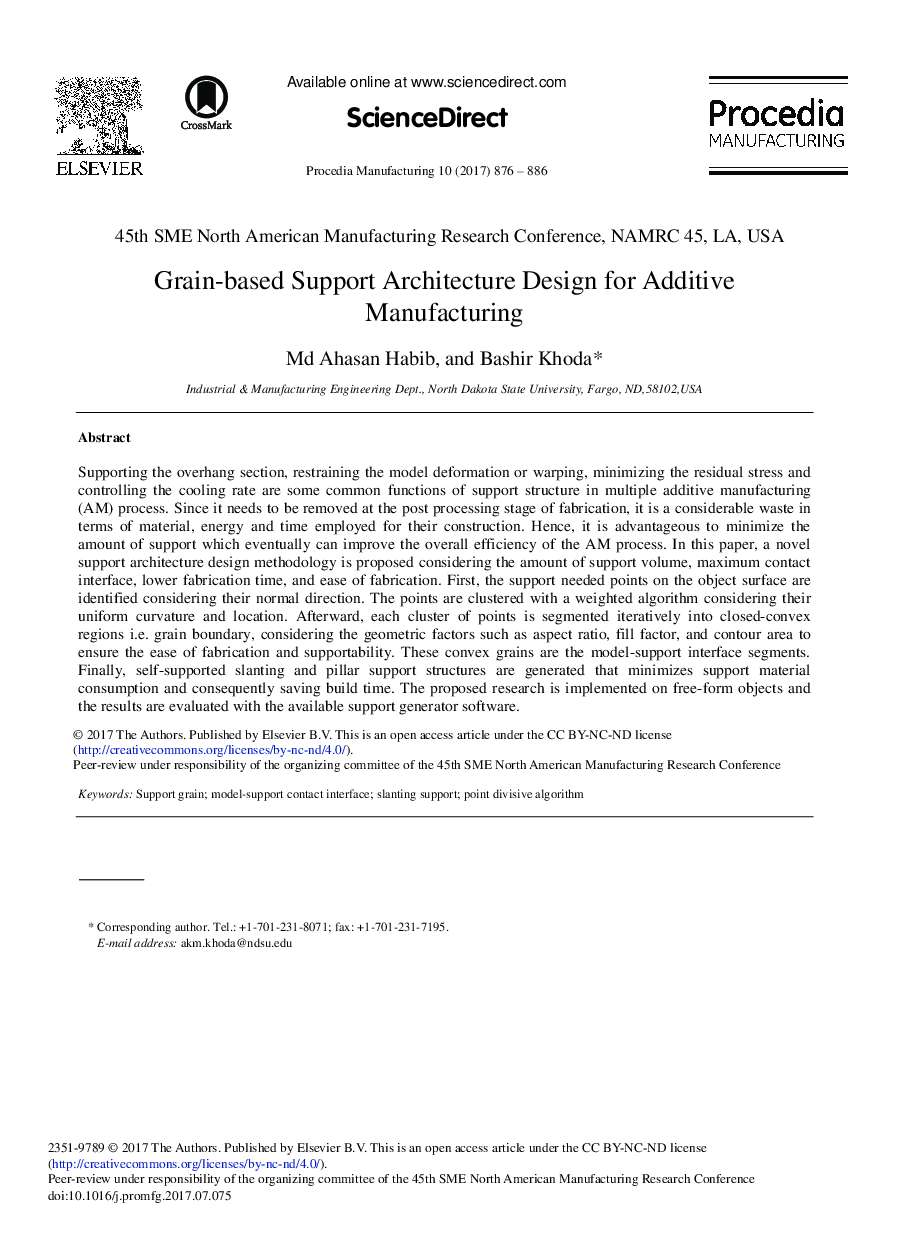| Article ID | Journal | Published Year | Pages | File Type |
|---|---|---|---|---|
| 5128831 | Procedia Manufacturing | 2017 | 11 Pages |
Supporting the overhang section, restraining the model deformation or warping, minimizing the residual stress and controlling the cooling rate are some common functions of support structure in multiple additive manufacturing (AM) process. Since it needs to be removed at the post processing stage of fabrication, it is a considerable waste in terms of material, energy and time employed for their construction. Hence, it is advantageous to minimize the amount of support which eventually can improve the overall efficiency of the AM process. In this paper, a novel support architecture design methodology is proposed considering the amount of support volume, maximum contact interface, lower fabrication time, and ease of fabrication. First, the support needed points on the object surface are identified considering their normal direction. The points are clustered with a weighted algorithm considering their uniform curvature and location. Afterward, each cluster of points is segmented iteratively into closed-convex regions i.e. grain boundary, considering the geometric factors such as aspect ratio, fill factor, and contour area to ensure the ease of fabrication and supportability. These convex grains are the model-support interface segments. Finally, self-supported slanting and pillar support structures are generated that minimizes support material consumption and consequently saving build time. The proposed research is implemented on free-form objects and the results are evaluated with the available support generator software.
